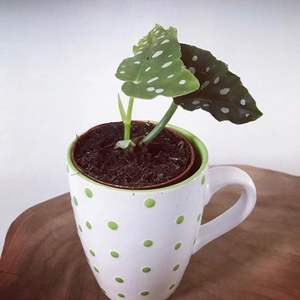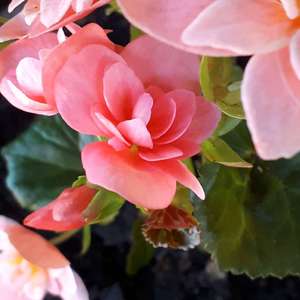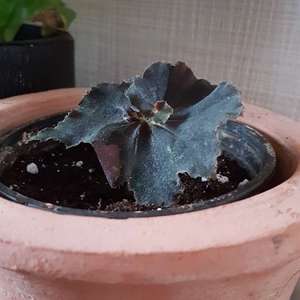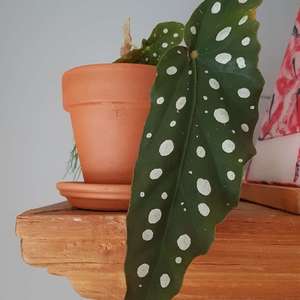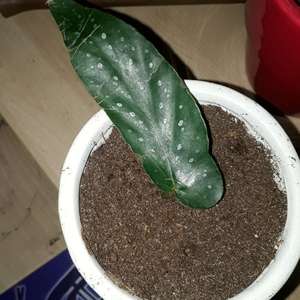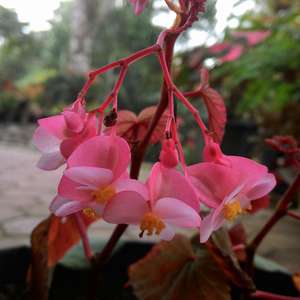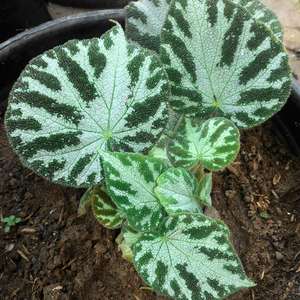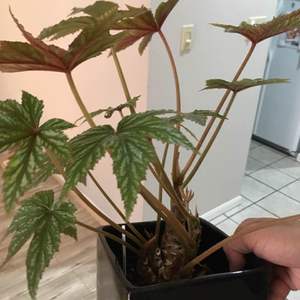文章
Miss Chen
2018年08月13日

Amstel Series begonias (Begonia x Hiemalis Amstel Series) have a mounding form, typically reaching about 12 inches tall. They usually bloom continuously throughout the growing season. The members of this series belong to the group called Rieger begonias, which were developed by crossing a tuberous begonia with a wax begonia.

Amstel begonias grow as perennials outdoors only in the frost-free climates in U.S. Department of Agriculture plant hardiness zones 10 through 11, but you can treat them as annuals or grow them as houseplants elsewhere.
Where to Plant
Amstel begonias are relatively tolerant of heat and can grow in a variety of light conditions, but do best in a spot that receives sunlight filtered through leaves or that is otherwise partially shaded.
Watering
Amstel begonias need consistent moisture, but won't tolerate soggy, saturated soils. Monitor the soil's moisture level carefully, and water so the soil doesn't dry out completely but is never waterlogged. If you're growing your begonias in pots or containers, make sure the containers have drainage holes and are never left sitting in standing water.
Fertilizer
Amstel begonias benefit from a monthly application of fertilizer to help them to continue to bloom prolifically through the season. Mix 1/2 teaspoon of water-soluble 15-30-15 fertilizer in 1 gallon of water, and use the solution to water the plant. Apply it at the base of the plant, and avoid getting the fertilizer on the plant's leaves and stems.
Pruning
Over the course of the season, Amstel begonias may get leggy or have a ragged in appearance. If this happens, prune or pinch the stems back so that they contain three to five growth nodes. The plants will rebound from this severe pruning and should start to bloom again in a week or two.
Removing wilted flowers promptly will encourage the plant to put its energy into new flowers and will help ensure it keeps blooming vigorously.
If you use pruners to maintain the plant, dip the blades in isopropyl alcohol after each cut to help prevent the spread of diseases.

Pests and Diseases
Amstel begonias are resistant to most pests and diseases and should be problem-free given good growing conditions. To prevent fungal infections, such as powdery mildew, avoid getting the leaves wet when you're watering and space the plants 12 to 15 inches apart so that there is plenty air circulation around the plants.

Amstel begonias grow as perennials outdoors only in the frost-free climates in U.S. Department of Agriculture plant hardiness zones 10 through 11, but you can treat them as annuals or grow them as houseplants elsewhere.
Where to Plant
Amstel begonias are relatively tolerant of heat and can grow in a variety of light conditions, but do best in a spot that receives sunlight filtered through leaves or that is otherwise partially shaded.
Watering
Amstel begonias need consistent moisture, but won't tolerate soggy, saturated soils. Monitor the soil's moisture level carefully, and water so the soil doesn't dry out completely but is never waterlogged. If you're growing your begonias in pots or containers, make sure the containers have drainage holes and are never left sitting in standing water.
Fertilizer
Amstel begonias benefit from a monthly application of fertilizer to help them to continue to bloom prolifically through the season. Mix 1/2 teaspoon of water-soluble 15-30-15 fertilizer in 1 gallon of water, and use the solution to water the plant. Apply it at the base of the plant, and avoid getting the fertilizer on the plant's leaves and stems.
Pruning
Over the course of the season, Amstel begonias may get leggy or have a ragged in appearance. If this happens, prune or pinch the stems back so that they contain three to five growth nodes. The plants will rebound from this severe pruning and should start to bloom again in a week or two.
Removing wilted flowers promptly will encourage the plant to put its energy into new flowers and will help ensure it keeps blooming vigorously.
If you use pruners to maintain the plant, dip the blades in isopropyl alcohol after each cut to help prevent the spread of diseases.

Pests and Diseases
Amstel begonias are resistant to most pests and diseases and should be problem-free given good growing conditions. To prevent fungal infections, such as powdery mildew, avoid getting the leaves wet when you're watering and space the plants 12 to 15 inches apart so that there is plenty air circulation around the plants.
0
0
文章
Miss Chen
2018年08月12日

Few plants are more versatile than the begonia (Begonia spp.), which comes in many different types. One group is especially well-adapted to growing in a hanging planter or basket, either outdoors or in the house. This type of begonia is called trailing or scadent -- scadent means "climbing" -- because its branches can become quite long, in some varieties up to 8 feet, making them ideal for hanging planters. For example, some types of tuberous begonias (Begonia tuberosa) have this type of growth habit and do especially well as hanging plants. They grow in U.S. Department of Agriculture plant hardiness zones 9 through 11, but can also grow as annuals or as houseplants, needing only basic care and occasional trimming to thrive.
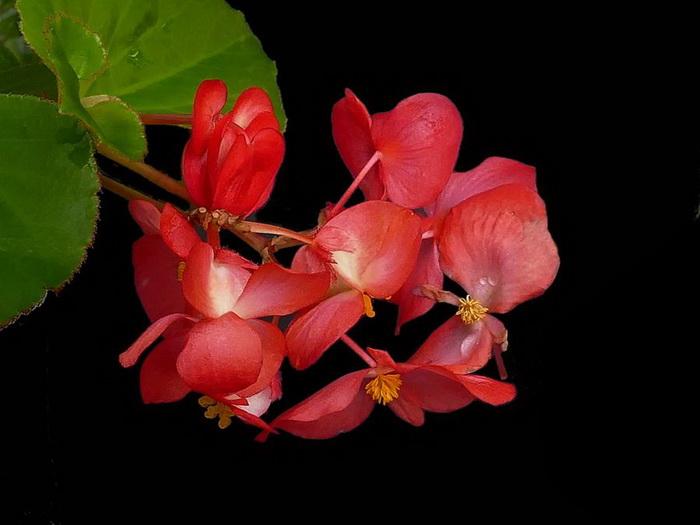
Light Needs
Trailing begonias need strong light to produce a full, multi-stemmed plant with lots of flowers. If you grow the plant outdoors, keep it in a spot that gets some filtered sun in the morning, but avoid full sun at midday or during the hot afternoon hours because this could burn the plant. A spot under a widely-branched tree that provides shifting sun and partial shade is ideal. Indoors, keep a houseplant in a bright spot, such as in an east window where it gets some morning sun.
If the leaves start to fade and become light green, this indicates that the begonia is getting too much light, so move the plant to a shadier spot. If the stems get extra-long, with long distances between leaf origins, this signals that the plant needs more light; in this case, move it to a brighter spot.
Water Needs
Hanging begonia plants do best when soil is evenly moist, but it's important not to over-water because this can cause constantly soggy soil which can damage the plant and, if uncorrected, might kill it. For an indoor-grown plant, water whenever the top inch or two feels dry to the touch, allowing the pot to drain fully. Never keep the pot in a water-filled saucer, because this can cause root rot.
A hanging begonia grown outdoors needs watering whenever its soil surface feels dry. It's a good idea to check this every few days during the summer, because hot weather can cause the soil to dry quickly.
Whether grown indoors or in the garden, a begonia slows its growth during winter when it rests, so cut back watering during the winter months.

Fertilizing Guidelines
Fertilizing a hanging begonia every other time you give it water helps keep the plant growing and flowering during it active season, usually from spring until early fall. Use a balanced formula such as 20-20-20, diluting it half-strength or about 1/4 teaspoon per gallon of water, but check your product label for further directions.
To boost flowering, you can switch to a high-phosphorus formula just before flowering starts, usually in early summer, to help set more flower buds. For example, use a 15-30-15 formula, diluting 1 tablespoon per gallon of water for garden plants and 1/2 teaspoon per gallon for houseplants, but check the product label for additional information. Feed the plant every one or two weeks until the blooming season ends, usually in fall.
Withhold fertilizer during winter to give the plant a rest.
Trimming and Other Care
Trailing begonias in hanging planters can start appearing leggy as the season progresses and the stems get longer. Encourage bushier growth and lateral branching by pinching back the growing tips frequently, using your fingertips or shears that you wipe with rubbing alcohol between cuts to prevent spreading plant diseases. By varying the length of stems through trimming, you can also produce a more shapely plant. For an older plant, remove some old stems now and then to encourage new growth from the plant's base.
Begonias are usually free of significant disease problems, but they can attract several pests, including fluffy white mealybugs. Control these by touching each pest with a cotton swab dipped in rubbing alcohol to destroy it. The plant might also attract spider mites, which form visible, web-like coverings on leaves and flowers. Destroy these pests by spraying the plant thoroughly with insecticidal soap, diluted at a rate of 5 tablespoons per gallon of water; repeat this every two weeks as needed.
Frost Protection
If you grow a hanging begonia outdoors year round and you expect unusual cold or even a bit of frost, bring the plant indoors until weather warms. You can also leave it outdoors, but protect it by hanging a light cloth from the planter's hook so it covers the entire plant, or by placing the planter in a plastic bag that's large enough to enclose the entire plant, tying the bag's open ends to the planter's hook. Be careful when removing any covering, so that you don't injure stems or flower buds.

Light Needs
Trailing begonias need strong light to produce a full, multi-stemmed plant with lots of flowers. If you grow the plant outdoors, keep it in a spot that gets some filtered sun in the morning, but avoid full sun at midday or during the hot afternoon hours because this could burn the plant. A spot under a widely-branched tree that provides shifting sun and partial shade is ideal. Indoors, keep a houseplant in a bright spot, such as in an east window where it gets some morning sun.
If the leaves start to fade and become light green, this indicates that the begonia is getting too much light, so move the plant to a shadier spot. If the stems get extra-long, with long distances between leaf origins, this signals that the plant needs more light; in this case, move it to a brighter spot.
Water Needs
Hanging begonia plants do best when soil is evenly moist, but it's important not to over-water because this can cause constantly soggy soil which can damage the plant and, if uncorrected, might kill it. For an indoor-grown plant, water whenever the top inch or two feels dry to the touch, allowing the pot to drain fully. Never keep the pot in a water-filled saucer, because this can cause root rot.
A hanging begonia grown outdoors needs watering whenever its soil surface feels dry. It's a good idea to check this every few days during the summer, because hot weather can cause the soil to dry quickly.
Whether grown indoors or in the garden, a begonia slows its growth during winter when it rests, so cut back watering during the winter months.

Fertilizing Guidelines
Fertilizing a hanging begonia every other time you give it water helps keep the plant growing and flowering during it active season, usually from spring until early fall. Use a balanced formula such as 20-20-20, diluting it half-strength or about 1/4 teaspoon per gallon of water, but check your product label for further directions.
To boost flowering, you can switch to a high-phosphorus formula just before flowering starts, usually in early summer, to help set more flower buds. For example, use a 15-30-15 formula, diluting 1 tablespoon per gallon of water for garden plants and 1/2 teaspoon per gallon for houseplants, but check the product label for additional information. Feed the plant every one or two weeks until the blooming season ends, usually in fall.
Withhold fertilizer during winter to give the plant a rest.
Trimming and Other Care
Trailing begonias in hanging planters can start appearing leggy as the season progresses and the stems get longer. Encourage bushier growth and lateral branching by pinching back the growing tips frequently, using your fingertips or shears that you wipe with rubbing alcohol between cuts to prevent spreading plant diseases. By varying the length of stems through trimming, you can also produce a more shapely plant. For an older plant, remove some old stems now and then to encourage new growth from the plant's base.
Begonias are usually free of significant disease problems, but they can attract several pests, including fluffy white mealybugs. Control these by touching each pest with a cotton swab dipped in rubbing alcohol to destroy it. The plant might also attract spider mites, which form visible, web-like coverings on leaves and flowers. Destroy these pests by spraying the plant thoroughly with insecticidal soap, diluted at a rate of 5 tablespoons per gallon of water; repeat this every two weeks as needed.
Frost Protection
If you grow a hanging begonia outdoors year round and you expect unusual cold or even a bit of frost, bring the plant indoors until weather warms. You can also leave it outdoors, but protect it by hanging a light cloth from the planter's hook so it covers the entire plant, or by placing the planter in a plastic bag that's large enough to enclose the entire plant, tying the bag's open ends to the planter's hook. Be careful when removing any covering, so that you don't injure stems or flower buds.
0
0
成长记
Lolney
2018年06月09日

I now added "Whopper® Red With Green Leaf Begonia. Water: Medium. Fertilize: Every two weeks. General Information: Whopper begonias offer super-sized performance which means maximum enjoyment for customers. Whopper is a big, vigorous plant that will fill out beds and large containers equally well. Truly a 50 MPH drive-by color to ... Spacing: 10 - 14'' (25 - 36cm) Scientific Name: Begonia x benariensis Height: 30 - 34'' (76 - 86cm) Exposure: Shade, Partial Sun, Sun" in my "garden"
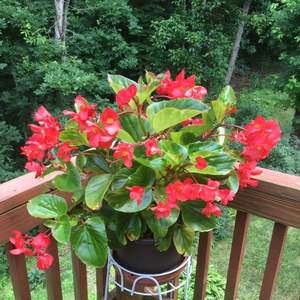

1
0



